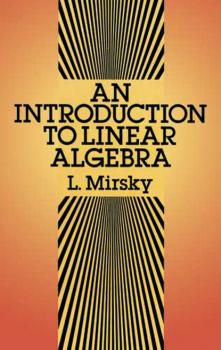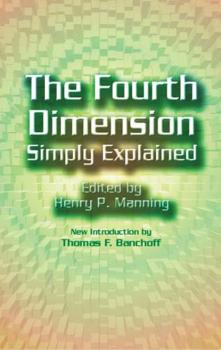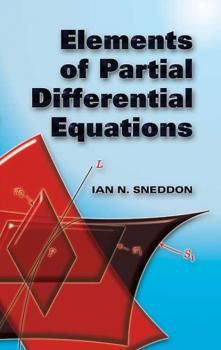ТОП просматриваемых книг сайта:
Dover Books on Mathematics
Скачать книги из серии Dover Books on MathematicsАннотация
The importance of eigenvalue theory in pure and applied mathematics, and in physics and chemistry, makes it incumbent on students to understand the various methods of approximate calculation of eigenvalues. It is especially important to develop such methods in a general and theoretical manner, if only to avoid missing opportunities for particular applications. This book does just that, approaching the topic from a purely mathematical standpoint.Because variational methods are particularly well adapted to successive approximation, this book gives a simple exposition of such methods, not only of the familiar Rayleigh-Ritz method, but especially of the related methods — the Weinstein method, Weinstein-Aronszajn method, and others. To make the book accessible to a broad range of students, little mathematical knowledge is presupposed beyond the elements of calculus. Where specialized knowledge is required — as it is in the discussion of direct methods in the calculus of variations and the theory of completely continuous operators in Hilbert space — the requisite material is developed in full.The first nine chapters, written in elementary style, discuss the general theory of variational methods with special reference to the vibrating plate. In the last chapter, the information gained thereby is extended, in a less elementary way, to more general cases. Exercises are provided throughout to illuminate the ideas and methods developed in the text.
Аннотация
"For high school seniors or college freshmen with a background in algebra and trigonometry, the book should provide a good introduction to matrices, vector algebra, analytical geometry, and calculus. The work's solid modern mathematical content and its personality recommend consideration as a text or as stimulating supplementary reading." — American Scientist"The book is well written and the presentation throughout achieves clarity of thought with a minimum of computational effort." — Physics TodayThis rewarding text, beautifully illustrated by the author and written with superb clarity, offers undergraduate students a solid mathematical background and functions equally well for independent study.The five-part treatment begins with geometry, defining three-dimensional Euclidean space and its axioms, the coordinate system and coordinate transformation, and matrices. A review of vector algebra covers vector properties, multiplication, the resolution of a vector along a complete set of base vectors, and vector transformations. Topics in analytic geometry introduce loci, straight lines, the plane, two-dimensional curves, and the quadratic form. Functions are defined, as are intervals, along with multiplicity, the slope at a point, continuity, and areas. The concluding chapter, on differential and integral calculus, explains the concept of a limit, the derivative, the integral, differential equations, and applications of the calculus to kinematics.
Аннотация
A coherent, well-organized look at the basis of quantum statistics’ computational methods, the determination of the mean values of occupation numbers, the foundations of the statistics of photons and material particles, thermodynamics.
Аннотация
Amusing and informative in its approach to solving mathematical bafflers, this treasury of theories, games, puzzles and oddities of all kinds, compiled by one of the world's best card players (Jacoby) and an expert in mathematical recreations (Benson) will delight and fascinate math enthusiasts.Although primarily intended to entertain, the wide variety of puzzles ― ranging from facile curiosities to very difficult intellectual exercises ― will challenge you to keep your mind going full steam. Each of the book's five sections ― «Fun with Numbers,» «Fun with Letters,» «The Odds: Explorations in Probability,» «Where Inference and Reasoning Reign» and «The Answers Are Whole Numbers» ― is made up of approximately 30 problems, with solutions grouped at the end of each section. Math buffs will love testing their puzzle-solving skills on such challenging brainteasers as The Enterprising Snail, Mrs. Crabbe and the Bacon, The Fly and the Bicycles, The Lovesick Cockroaches, The Three Prisoners, Girls Should Live in Brooklyn, Who Was Executed?, Creaker vs. Roadhog, The Crossed Ladders, The Ancient Order of the Greens, and many more.Few of these problems require any advanced mathematical knowledge or prowess. You'll find that simply keeping your wits about you and your logical skills honed are all you need to enjoy a delightful and thought-provoking adventure in recreational mathematics. Foreword. 10 illustrations. 14 tables.
Аннотация
Classic exposition of modern theories of differentiation and integration and principal problems and methods of handling integral equations and linear functionals and transformations. 1955 edition.
Аннотация
"The straight-forward clarity of the writing is admirable." — American Mathematical Monthly.This work provides an elementary and easily readable account of linear algebra, in which the exposition is sufficiently simple to make it equally useful to readers whose principal interests lie in the fields of physics or technology. The account is self-contained, and the reader is not assumed to have any previous knowledge of linear algebra. Although its accessibility makes it suitable for non-mathematicians, Professor Mirsky's book is nevertheless a systematic and rigorous development of the subject. Part I deals with determinants, vector spaces, matrices, linear equations, and the representation of linear operators by matrices. Part II begins with the introduction of the characteristic equation and goes on to discuss unitary matrices, linear groups, functions of matrices, and diagonal and triangular canonical forms. Part II is concerned with quadratic forms and related concepts. Applications to geometry are stressed throughout; and such topics as rotation, reduction of quadrics to principal axes, and classification of quadrics are treated in some detail. An account of most of the elementary inequalities arising in the theory of matrices is also included. Among the most valuable features of the book are the numerous examples and problems at the end of each chapter, carefully selected to clarify points made in the text.
Аннотация
To remove the contents of an egg without puncturing its shell or to drink the liquor in a bottle without removing the cork is clearly unthinkable — or is it? Understanding the world of Einstein and curved space requires a logical conception of the fourth dimension.This readable, informative volume provides an excellent introduction to that world, with 22 essays that employ a minimum of mathematics. Originally written for a contest sponsored by Scientific American, these essays are so well reasoned and lucidly written that they were judged to merit publication in book form. Their easily understood explanations cover such topics as how the fourth dimension may be studied, the relationship of non-Euclidean geometry to the fourth dimension, analogues to three-dimensional space, some four-dimensional absurdities and curiosities, possible measurements and forms in the fourth dimension, and extensive considerations of four-dimensional space's simpler properties.Since each essay is independently conceived, all of the writers offer fresh viewpoints and original examples. Because of this, some of the most important principles relating to the fourth dimension are viewed from several different angles at once — an invaluable aid to visualizing these abstruse but fascinating ideas. New Introduction by Thomas F. Banchoff, Brown University. 82 figures.
Аннотация
This graduate-level textbook and monograph defines the functions of a real variable through consistent use of the Daniell scheme, offering a rare and useful alternative to customary approaches. The treatment can be understood by any reader with a solid background in advanced calculus, and it features many problems with hints and answers. «The exposition is fresh and sophisticated,» declared Sci-Tech Book News, «and will engage the interest of accomplished mathematicians.» Part one is devoted to the integral, moving from the Reimann integral and step functions to a general theory, and obtaining the «classical» Lebesgue integral in n space. Part two constructs the Lebesgue-Stieltjes integral through the Daniell scheme using the Reimann-Stieltjes integral as the elementary integral. Part three develops theory of measure with the general Daniell scheme, and the final part is devoted to the theory of the derivative.
Аннотация
Geared toward students of applied rather than pure mathematics, this volume introduces elements of partial differential equations. Its focus is primarily upon finding solutions to particular equations rather than general theory.Topics include ordinary differential equations in more than two variables, partial differential equations of the first and second orders, Laplace's equation, the wave equation, and the diffusion equation. A helpful Appendix offers information on systems of surfaces, and solutions to the odd-numbered problems appear at the end of the book. Readers pursuing independent study will particularly appreciate the worked examples that appear throughout the text.
Аннотация
This self-contained treatment originated as a series of lectures delivered to the Mathematical Association of America. It covers basic results on homogeneous approximation of real numbers; the analogue for complex numbers; basic results for nonhomogeneous approximation in the real case; the analogue for complex numbers; and fundamental properties of the multiples of an irrational number, for both the fractional and integral parts.The author refrains from the use of continuous fractions and includes basic results in the complex case, a feature often neglected in favor of the real number discussion. Each chapter concludes with a bibliographic account of closely related work; these sections also contain the sources from which the proofs are drawn.










